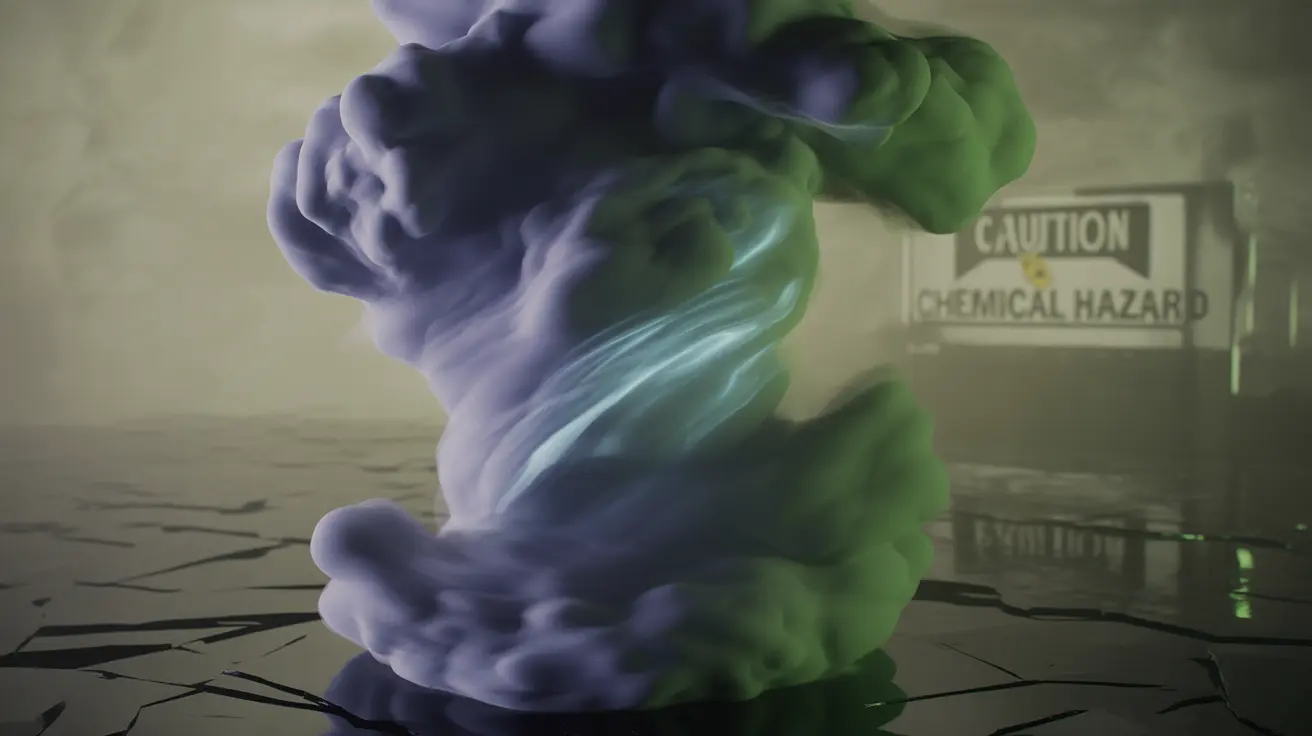Mixing household cleaning products might seem harmless, but combining ammonia and bleach creates an extremely dangerous situation that can have severe health consequences. Understanding the risks and proper handling of these common cleaning agents is crucial for maintaining a safe home environment.
This comprehensive guide will explore the hazards of mixing ammonia and bleach, recognize the warning signs of exposure, and provide essential safety guidelines for using these cleaning products separately and safely.
The Chemical Reaction: Why Mixing is Dangerous
When ammonia and bleach combine, they create toxic chloramine gases. These gases can cause immediate respiratory distress and other serious health complications. The chemical reaction also produces other dangerous compounds that can cause severe irritation to the eyes, nose, throat, and lungs.
Immediate Signs of Toxic Gas Exposure
Recognizing the symptoms of chloramine gas exposure is crucial for taking prompt action. Common signs include:
- Burning sensation in eyes, nose, and throat
- Coughing and chest pain
- Difficulty breathing
- Watery eyes
- Nausea and vomiting
- Wheezing
- Dizziness
Prevention and Safe Cleaning Practices
To avoid accidental mixing of ammonia and bleach, follow these essential safety guidelines:
- Never combine cleaning products
- Read all product labels carefully
- Store cleaning products separately
- Ensure proper ventilation when cleaning
- Use only one cleaning product at a time
- Keep cleaning products in their original containers
Emergency Response Protocol
If accidental mixing occurs, taking immediate action is crucial:
- Evacuate the area immediately
- Open windows and doors for ventilation
- Call emergency services or poison control
- Move to fresh air
- Seek immediate medical attention if symptoms occur
Safe Alternatives for Cleaning
Instead of risking dangerous combinations, consider these safer cleaning approaches:
- Use single-ingredient cleaners
- Choose natural cleaning alternatives
- Follow manufacturer recommendations
- Consider pre-mixed, ready-to-use products
- Use different cleaning products on different days
Frequently Asked Questions
- What happens if I accidentally mix ammonia and bleach while cleaning my home?
If you accidentally mix ammonia and bleach, toxic chloramine gases will immediately form. These gases can cause severe respiratory problems and other health issues. Evacuate the area immediately, ensure ventilation, and seek fresh air.
- What are the symptoms of chloramine gas exposure from mixing bleach and ammonia?
Symptoms include burning eyes, throat irritation, coughing, chest pain, difficulty breathing, watery eyes, nausea, and dizziness. These symptoms can appear within seconds to minutes of exposure.
- How dangerous is inhaling chloramine gas, and can it be fatal?
Inhaling chloramine gas can be extremely dangerous and potentially fatal, especially in enclosed spaces or with prolonged exposure. The gas can cause severe respiratory damage, chemical burns to the lungs, and in serious cases, respiratory failure.
- How can I safely use bleach and ammonia without risking toxic gas exposure?
Never use bleach and ammonia together or even on the same day. Keep these products separate, use them individually, ensure proper ventilation, and always read product labels carefully. Clean surfaces with one product at a time.
- What should I do if I or someone else breathes in fumes from bleach and ammonia mixed together?
Immediately move to fresh air and call emergency services or poison control. Open windows and doors for ventilation. Seek immediate medical attention, even if symptoms seem mild at first, as respiratory problems can worsen over time.




